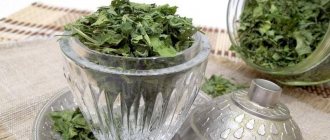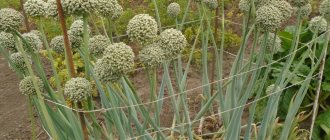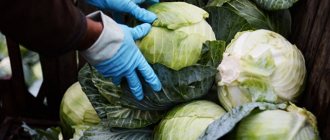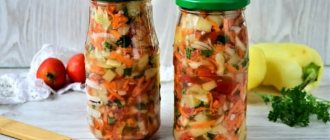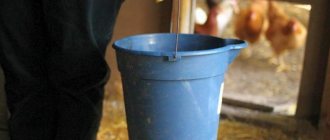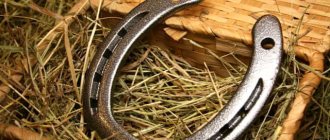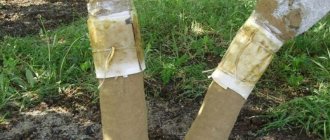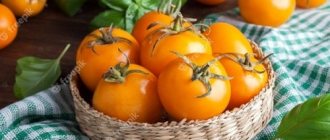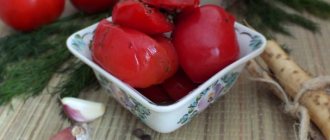Parsley is a spicy representative of greens, revered in any family. It is not surprising that many gardeners are interested in growing this plant. The frost resistance of parsley allows it to be planted almost all year round, and planting before winter has a number of advantages. However, in order to get a bountiful harvest, you need to know the subtleties and nuances of cultivation.
Advantages
Sowing parsley before winter has a list of advantages that make the late cultivation method so popular:
- Abundant harvest. Seeds that survive autumn and winter frosts become much hardier, stronger and healthier, which implies a high germination rate.
- Speed. Parsley planted before winter can yield a harvest in the shortest possible time. It is significantly ahead of its spring counterparts and leaves earlier by 3-4 weeks. Snow cover makes it possible for the plant not to freeze, and the first spring sun and warmth will allow it to quickly grow and ripen.
- Versatility. The soil in which parsley was grown can be reused, which not every crop can boast of.
- Save time. In the spring, when active farming activities begin to plant other plants, more time will be freed up for these tasks, since it will not need to be spent on planting parsley.
About parsley seeds and features of their sowing
Due to the fact that the seeds of parsley are very small, their consumption is small: leaf - 7-8 grams per 10 square meters of area; root - for the same area - 3-3.5 grams. But when sowing in autumn, this norm, which is intended for spring sowing, should be doubled, because by spring, despite the fact that they are not afraid of -9 C, they may not all survive in harsh winters with little snow.
Plants can be placed in the garden bed in rows (lines) with a row spacing of 30-45 centimeters or in two-line and multi-line stripes, the distance between which is 50-60 centimeters, and between the lines - 12-15 centimeters. Stitches, shallow grooves up to 2-3 centimeters, are drawn using a sharp angle of a hoe along a twine cord so that the rows are even in the spring. The furrows sown with dry parsley seeds are filled with dry soil, previously stored in some container in case the ground freezes. Next, the bed is covered with mulch and compacted.
Fall sowing of leaf parsley is more desirable, most likely because it is an annual plant. But root parsley, a two-year vegetable, will produce a harvest of root vegetables only in the second year, and there is little point in rushing its seedlings. For your information! The green part of parsley is dried, ground in its dried form, sifted through a sieve, and the resulting green powder becomes a convenient and good seasoning for all first courses and most second courses.
The right time
On average, the best time to plant parsley before winter is the end of October or the beginning of November. However, depending on the climatic conditions and temperature conditions of the region, the significant day may be brought closer or delayed.
Greens should be planted before the first frost, so as October approaches, it is advisable to keep a close eye on weather forecasts. Night temperatures fluctuating between 2-3 degrees below zero are a signal that it’s time to plant parsley.
When to plant parsley in 2022 according to the Lunar calendar
If you carry out gardening work based on the Lunar calendar, we suggest you familiarize yourself with the favorable days in 2021 for planting parsley in the fall before winter:
- in October: 7-9, 12-13, 16-19 (5, 26-27);
- in November: 8-9, 12-16 (2-4, 22-24, 29-30);
- in December: 5-7, 10-14 (1-3, 20-21, 27-30).
Please note that the best days for sowing root varieties (to obtain root crops) are indicated in brackets, and without brackets - for leaf parsley.
Prohibited days for sowing in autumn 2022: October 6, 14-15, 20, November 5, 10-11, 19 and December 4, 8-9, 19.
Seed preparation
The high content of essential oils in parsley seeds determines its long germination period. Therefore, in order to enjoy homemade greens as soon as possible, planting material must be properly prepared in advance:
- The first stage of preparation is careful selection and rejection of seeds. Among all of them, it is necessary to select the best representatives. Damaged, spoiled, low-quality seeds should be removed from the general accumulation without the slightest fear.
To speed up the emergence of seedlings, you can briefly keep the planting material in a disinfectant solution. For this purpose, a solution of boric acid, copper sulfate or potassium permanganate can be used.
- The next step is soaking. To do this, wrap the seeds in several layers of damp gauze. In this form they should last, on average, about 5 days. It is important to maintain the temperature regime - room temperature (22-25 degrees above zero) should be maintained in the place where the planting material is soaked throughout the entire soaking period.
- As soon as the seeds germinate, leave them still in damp gauze, but this time reduce the temperature to low levels - no more than 2 degrees Celsius, for hardening. To do this, the sprouted seeds are placed on the bottom shelf of the refrigerator for 7-10 days. After this time, the material is completely ready for planting.
Hardening off the seeds will come in handy if you plan to plant parsley before winter, although it is not mandatory.
There are also other methods of preparing seeds that are used less frequently by gardeners and farmers, but are not less effective:
- Bubbling. A procedure aimed at disinfecting planting material, sharply accelerating the emergence of seedlings and increasing germination. To do this, the seeds are soaked in cool (about 20 ° C) water, which the compressor continuously saturates with oxygen or air.
- Vernalization. This method is also aimed at accelerating the growth of parsley. To carry it out, the swollen seeds of the plant are kept at a low positive temperature for a short time (for example, at night), and then at room temperature (during the day). Vernalization is carried out over 7-10 days.
- Pelleting. To carry out this, you will need a special agricultural unit - a dragator. The essence of the technique is to envelop the seeds with a protective nutrient shell in the shape of a ball. As a rule, a complex of humus, peat and mineral fertilizers is used. Pelleting will ensure easy sowing of parsley with minimal time and effort.
Planting in open ground
There are two varieties of parsley grown, represented by many varieties:
- Leafy - has a tap root and a large rosette. The leaves are smooth and corrugated. The above-ground part of the plant is used in cooking and medicine.
- Root - distinguished by a cylindrical root crop that grows by the autumn of the first year of development. All parts of the culture have found application.
Planting parsley on a leaf begins early, immediately after the snow cover melts. In warm regions this is April, in the northern regions - early May, no later than the first ten days. Seeds germinate at temperatures around +3-5°C. Young seedlings are not afraid of spring frosts; they tolerate temperatures as low as -8°C.
Beginning farmers do not know when it is better to sow greens - in spring or autumn. Planting before winter provides advantages in germination speed. In cold weather, the seed undergoes a natural process of stratification and germinates early. The first sprigs of aromatic grass are harvested 2 weeks earlier than during spring planting.
Garden bed
It is recommended to plant parsley in bright areas, if there is not enough free space in partial shade. Sandy and loamy soils with a loose structure are preferred. Acidity level pH 6-7. The crop needs an abundance of organic matter; to meet nutritional needs, manure (in autumn), humus or compost is added to the soil. Spicy grass does not tolerate stagnant moisture; it should not be placed in areas with close groundwater. If necessary, greens are grown in bulk beds, raising the soil level by 30-40 cm. At the same time, minerals - phosphorus, nitrogen, potassium - are added to the soil along with organic matter.
Information. The seed planting rate is 0.5 g per m2; 25-30 adult plants are allowed per 1 m of bed length.
When choosing a location, pay attention to the predecessors of green culture. It is recommended to sow nightshades, cucumbers, and zucchini in place. You should not plant parsley after carrots and other umbelliferous plants. The plant can be planted in open ground with seeds or seedlings. The first option is used much more often. Only the leafy variety is grown in seedlings.
Seeds are sown in containers with loose soil in March. Until emergence, they are kept in a dark place. With the appearance of sprouts, the container is placed on the windowsill in sunlight. Water every other day. A month later, the seedlings are ready to be transplanted into open ground. They are placed in holes at a distance of 5-7 cm from each other. The advantage of the method is that you don’t have to wait 2-3 weeks for seedlings to appear in the garden.
How to sow parsley correctly?
In spring, the bed is loosened and leveled. If possible, use a solution of mullein (1:10), 5 liters of the composition are consumed per m2. For sowing, prepare furrows 2-3 cm deep (sandy soil) or 1.5-2 cm (for loam). The distance between adjacent grooves is 10-15 cm. The grooves are watered with warm water, then the seeds are sown. They are sprinkled with soil without compaction.
Selecting a location
Choosing the right place for planting is one of the three components of successfully growing parsley in the cold season. To select the right site, you should adhere to the following criteria:
- The first criterion for a successful location is lighting. Greenery is quite unpretentious to its growing conditions, and even in the shade it will feel quite comfortable. However, sufficient light will allow you to reap a larger harvest. Therefore, for planting, it is better to choose an area where daylight hours will be the longest. An open area in this case will be the best choice.
If onions, tomatoes, potatoes, cabbage or garlic previously grew at the potential planting site, this will be a significant advantage. But if carrots were previously grown in this area, it is better to find another place.
- The second criterion for a good location is snow cover. The more snow there is in winter at a potential landing site, the better. Snow will provide reliable protection for parsley from severe winter frosts and maintain the level of humidity it needs.
- The last selection criterion is conditions that pose a risk to the seedlings. Of course, parsley needs a certain amount of moisture, but this does not mean that the plant will withstand its excess. Therefore, areas where there is a risk of flooding are not suitable for growing these greens. This rule also applies to extremely windy places.
Uses of parsley
All over the world it is common to use parsley as a spice. It is added to:
- fish dishes;
- side dishes;
- meat dishes;
- soups.
When crushed, they are added to stews and many different sauces. The plant is also used in various dishes raw, fried and baked.
Soups with the addition of root parsley are tasty and aromatic
Each parsley bush contains flavonoids, essential oils, pectin and many other useful components. Regular consumption of this culture will help:
- stabilize intestinal function;
- increase immunity;
- get rid of kidney stones;
- cure gum disease.
When used externally, the root vegetable helps get rid of acne, blackheads, and oily shine.
We offer two ways to prepare parsley root - for internal and external use.
- To prepare a medicinal decoction , you need to pour 1 tbsp. a spoonful of finely chopped parsley root in 100 ml of boiling water. Boil for about 3 minutes. The resulting composition should be infused, after which it should be drunk three times a day before meals.
- The mixture for problem skin is prepared from 1 tbsp. spoons of grated parsley root, a small amount of black clay and 50 ml of water. The composition is used as a mask twice a week.
Girls whose hair is severely damaged by curling or frequent dyeing can use parsley decoction as a rinse. To do this, 2 roots are crushed and boiled in a liter of water for 15 minutes. The resulting decoction is infused and the hair is rinsed with it after washing.
Root parsley can be used for medicinal and preventive purposes
You can grow root sugar parsley in any convenient way and anywhere. This is a simple but interesting process, the result of which will be very healthy root vegetables and juicy greens. During the growing process, it is important to follow the main rules of gardeners so that the resulting harvest will please you.
Soil preparation
The last component of an abundant and high-quality parsley harvest in the spring is soil that is properly prepared in the summer, which must be cultivated and fertile.
To create the ideal soil for sowing parsley before winter, you will need to follow several steps:
- Immediately after collecting plants growing at the site where the greenery will be planted, treat the soil with superphosphate and potassium salt in a concentration not exceeding 20 grams of the substance per 1 square meter of area.
- Fertilize. It is strongly recommended not to use pure manure for this purpose. But the combination of rotted manure and sand will allow parsley to grow and develop without the risk of rotting seeds. The soil from such fertilizer will conduct moisture well and will be easy to loosen.
- Loosen the soil thoroughly and efficiently.
- Improve the quality of the top layer of soil by “diluting” it with sand or peat. This should be done carefully so that the soil remains soft, airy, and not compacted.
How to plant parsley before winter
Moving on to the most responsible and important part - sowing seeds in open ground, special attention should be paid to the weather conditions of the region - in the Moscow region, for example, winter planting of parsley is usually practiced after the temperature has reached +3 to +4 degrees. It should be noted that autumn planting of parsley involves the use of a large number of seeds - experienced gardeners add about 30–35% to the usual norm.
You will be interested to learn about the peculiarities of sowing dill and parsley before winter.
This is done in reserve, since none of the existing methods of increasing seed germination guarantees their preservation 100%. The technology for planting greenery in the autumn is not much different from the same procedure in the spring - a significant difference is observed only in the distance between the furrows.
General recommendations for winter planting parsley look like this:
- The film that covered the top of the bed must be put aside, and it is recommended to cover the bottom of the furrows with a thick layer of sand, which helps preserve the seeds.
- Next, the seeds are carefully placed in the furrows and sprinkled on top with a pre-prepared dry nutrient substrate, which is subsequently compacted.
- To avoid the formation of a “soil crust” that prevents the full development of plants, the soil must be mulched - peat or humus is best suited for this purpose.
- In case of prolonged rains, the bed must be covered with film again to protect the seeds from premature moisture. As soon as the frosts have finally set in, the covering material can be removed.
Sowing
You can plant parsley before winter either directly in the garden or at home. Before planting, you should be prepared for large expenditures of material: you will need a third more seeds than during spring or summer planting. Winter is a harsh season, and despite the frost resistance of parsley and preliminary hardening, on average only 70% of the planted seeds germinate.
Outdoors
Planting parsley in the garden will not be difficult even for a novice farmer who will need to take only 4 steps:
- If the seeds have been pre-soaked and have successfully completed the preparatory stage, they need to be given some time to dry and get rid of excess moisture. A few hours will be enough.
- Moisten the soil with light watering.
- Now you can start sowing. To do this, plant the seeds in the ground to a depth of no more than 1 centimeter. When immersing seeds, it is important to maintain a distance: there should be at least 15 centimeters between the rows of future parsley, and about 3 centimeters between the bushes.
To speed up the appearance of the first shoots, you can cover the beds of greenery with polyethylene and remove it when the shoots appear. Such a shelter will allow you to maintain an optimal temperature for the greenery.
- Mulch future plants with a three-centimeter layer.
If all conditions for proper planting are met (optimally chosen site, properly prepared seeds and high-quality fertilizer), after a week and a half, the first shoots can be detected. Dry seed may take a little longer.
At home
Due to the lack of a garden or land, or due to other reasons why it is not possible to grow parsley in open ground, it can also be grown at home, using boxes and pots that should be spacious enough.
To sow greens before winter at home, you need to follow these steps:
- Soak the seeds. To do this, heat the water to 38 degrees Celsius and leave the planting material in it for 3 days. Every 12 hours the water must be replaced with the same hot water.
- Cover the bottom of the container with a drainage mixture (a combination of pebbles and expanded clay) with a layer of several centimeters.
You can use high-quality fertilized soil from the garden, if you can get it. Otherwise, a universal primer from the store will do.
- Pour water and lightly compact the resulting homemade bed.
- Make small furrows in the soil, about 1 centimeter deep, and then proceed directly to planting. A pleasant bonus of planting parsley at home is the fact that in a container it can be sown more compactly: about 10 centimeters between rows. There will be enough distance between the future bushes of a couple of centimeters.
- Sprinkle the seedlings with a light layer of soil and place the container with the seeds in a well-lit place, such as an east- or south-facing windowsill, to provide sufficient lighting.
- Constantly maintain a suitable temperature for parsley, fluctuating between 15-20 degrees Celsius. Deviations in the smaller direction lead to slower growth of the plant, and deviations in the larger direction lead to drying out. If it is not possible to provide sufficient light at home, it is possible to use a regular table lamp, which must be placed at a distance of about half a meter from the box or pot with seedlings.
As soon as the bushes reach 10 centimeters in height, you can safely harvest: this parsley is already suitable for consumption.
Possible diseases and pests
Like any crop, parsley is also susceptible to attack by dangerous diseases and pests that can significantly reduce the yield and cause a lot of trouble during the process of treatment and care. The most harmful diseases of the crop are rust, powdery mildew, white leaf spot and black rot. Most of them attack parsley during any growing season.
We recommend that you learn about the beneficial properties of parsley root.
However, the symptoms for each disease are individual:
- Rust Parsley is easily recognized by the characteristic yellow-brown spots that appear on all above-ground organs of the plant.
- Powdery mildew is considered one of the most harmful diseases, widespread everywhere, and most often manifests itself on the leaves, inflorescences and stems of plants in the form of an unpleasant whitish coating. Later it will turn dark gray in color, and the affected parts of the parsley will become hard, brittle and unsuitable for consumption.
- White spot, or septoria, It mainly affects plant leaves, although seeds can also be infected. Spots of different sizes and shapes appear on both sides of the leaf blades, which after a while transform into fungal pycnidia in the form of small black dots. With a high degree of damage, the disease can ruin up to 70% of the crop.
- Black rot is characterized by damage to the roots of the plant, which quickly spreads throughout the rest of the plant. The development of the pathogen is facilitated by high temperature and humidity - when warm weather sets in, the roots and leaves begin to rapidly rot, becoming covered with an unpleasant black coating.
As for pests, the most common of them are carrot psyllid, carrot fly and melon aphid. Plants damaged by these insects are significantly stunted in growth, their surface becomes covered with a sickly purple color, and the leaves rapidly turn yellow and dry out. There are also frequent cases of curvature of stems, the unnatural appearance of which can easily determine the invasion of parasites. Only preventive measures aimed at creating comfortable and favorable conditions for parsley will help prevent the occurrence of misfortunes, namely:
- regular inspection of crops for signs of damage;
- weed control;
- thorough cleaning of the area from plant debris;
- compliance with crop rotation;
- timely removal of diseased specimens;
- compliance with the rules of watering, tillage and application of microelements.
You might be interested in learning how to distinguish parsley from cilantro.
Care
Until the first sprouts emerge above the ground, caring for and caring for parsley comes down to the gardener’s attentive attitude to watering and ventilation. Seedlings should be watered regularly as the soil dries, but not too much. Uninvited guests in the form of weeds should be removed at first detection.
In case of sudden severe frosts, the parsley can be covered with a special agronomic fiber that allows air to pass through well.
As soon as the first 2-3 true leaves appear, you can start weeding and thinning. Any manipulations must be carried out by the farmer carefully, taking care not to damage the fragile and vulnerable plant and its root system.
In order for parsley to form full-fledged leaf rosettes, it must be fed twice: when the first leaves appear and as soon as a full-fledged small rosette is formed. For these purposes, fertilizer is used, made from mullein or compost in a ratio of 9 liters of water per 1 kilogram of organic matter. It would not be superfluous to add 15 grams of potassium sulfate and superphosphate.
Timely watering, loosening, thinning and fertilizing parsley are excellent preventive measures for diseases of this plant. However, sometimes it can become infected:
- white spotting;
- brown rot;
- powdery mildew;
- peronosporosis;
- early burn;
- rust.
If any suspicious formations are detected on the plant, it must be processed. To do this, use a weak (1%) solution of Bordeaux mixture, which must be used to treat all the green parts of the parsley. Spraying with a 1% solution of colloidal sulfur helps rid the plant of powdery mildew especially effectively.
Caring for winter parsley in spring and summer
Caring for parsley planted in the fall will not be difficult - it is enough to carry out standard agricultural work in a timely manner. These include watering, fertilizing, loosening the soil and regularly removing weeds. When the first shoots appear in the spring, experienced gardeners recommend covering the parsley with a translucent film - this way the crops will favorably survive the aggressive influence of the environment. As soon as 2-3 true leaves become noticeable on the sprouts, the parsley will need to be thinned out.
Experienced gardeners usually carry out this procedure twice - the first time in order to form beds in which the strongest and healthiest shoots should remain, and the second time after the appearance of 6-7 leaves. Then the distance between the rows is significantly reduced to 5–6 cm. In addition to thinning, the crop also needs to loosen the soil - however, you should start this procedure only after stable warm weather has established. In this case, it is necessary to carefully monitor the structure of the soil - it should not be overly dense.
Harvest and storage
Parsley should be collected gradually: as it ripens and is needed. A rational attitude to collecting leaves and roots will provide the gardener with fresh and tasty aromatic greens for a long time.
Methods for storing parsley leaves may vary depending on your needs. For long-term preservation of the harvest, greens can be frozen or dried. And if you need the spice in the near future, then just put it in the refrigerator or prepare it in oil.
The roots of the plant should be stored in a wooden box and in a cool place. For better preservation, it is strongly recommended to cover them with sawdust or sand.
Root parsley: description and a little history
The warm countries of the African Mediterranean are considered the homeland of parsley, and in Europe they learned about root parsley in the 9th century. Two centuries later, they began to grow it exclusively for medicinal purposes under different names - variegated grass, sverbiga, petrosil grass. The plant produces an excellent harvest of greenery with a spicy aroma and sweetish taste. The roots are white and can reach a length of up to 30 cm.
Description of parsley root
Juicy green spices
The best varieties
Not every variety of parsley will tolerate sowing well before winter. Therefore, if you choose this particular technique, you should pay attention to the following frost-resistant leaf varieties:
- Bogatyr;
- Breeze;
- Carnival;
- Leafy curly;
- Leafy common;
- Esmeralda.
Root varieties with fewer hard leaves can also be sown successfully in late fall. The following varieties will give a particularly good harvest in such conditions:
- Alba;
- Berlin;
- Good morning;
- Spicy;
- Sugar;
- Harvest.
Any gardener, even a beginner, can grow parsley. This unpretentious plant feels equally good in cold autumn and frosty winter. Sowing this spicy herb before winter will allow you to get a generous and high-quality harvest in early spring, when other plants are just beginning to be planted.
0
0
Copy link
Popular varieties for winter cultivation
Not all vegetable varieties are suitable for planting before winter. The most common greens with early and medium ripening periods are:
- root parsley Russian size with snow-white pulp and a sweetish taste of the underground part of the plant;
- the Eagle variety, unpretentious in care, with a lush leaf rosette;
- Common leaf parsley, frost-resistant, with lush greenery;
- Italian giant of mid-season appearance, quickly growing large green leaves;
- variety of curly parsley Esmeralda.
Varieties are selected in accordance with the purpose of the vegetable crop, resistance to low temperatures and diseases.
